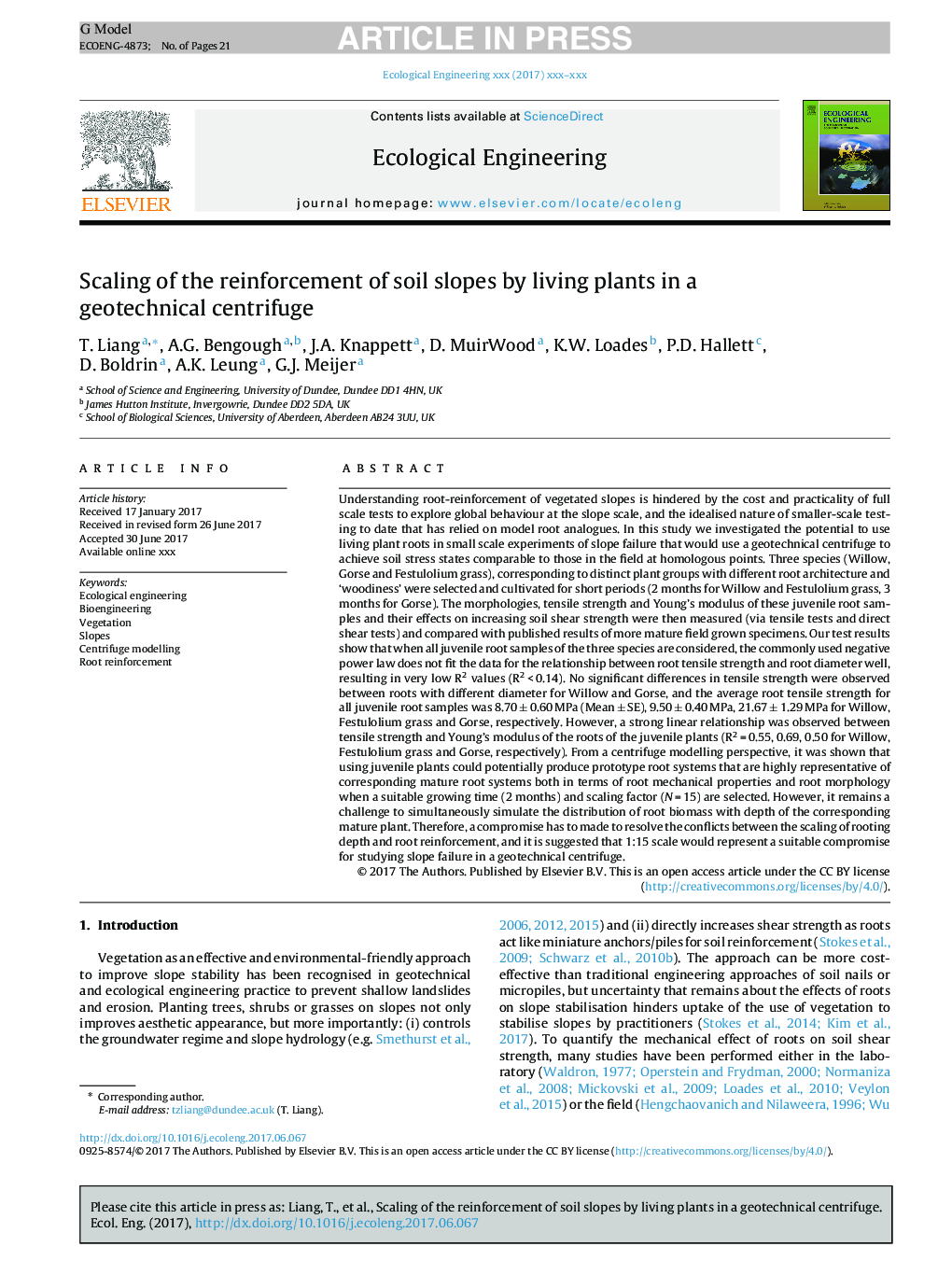| Article ID | Journal | Published Year | Pages | File Type |
|---|---|---|---|---|
| 8848160 | Ecological Engineering | 2017 | 21 Pages |
Abstract
Understanding root-reinforcement of vegetated slopes is hindered by the cost and practicality of full scale tests to explore global behaviour at the slope scale, and the idealised nature of smaller-scale testing to date that has relied on model root analogues. In this study we investigated the potential to use living plant roots in small scale experiments of slope failure that would use a geotechnical centrifuge to achieve soil stress states comparable to those in the field at homologous points. Three species (Willow, Gorse and Festulolium grass), corresponding to distinct plant groups with different root architecture and 'woodiness' were selected and cultivated for short periods (2 months for Willow and Festulolium grass, 3 months for Gorse). The morphologies, tensile strength and Young's modulus of these juvenile root samples and their effects on increasing soil shear strength were then measured (via tensile tests and direct shear tests) and compared with published results of more mature field grown specimens. Our test results show that when all juvenile root samples of the three species are considered, the commonly used negative power law does not fit the data for the relationship between root tensile strength and root diameter well, resulting in very low R2 values (R2 < 0.14). No significant differences in tensile strength were observed between roots with different diameter for Willow and Gorse, and the average root tensile strength for all juvenile root samples was 8.70 ± 0.60 MPa (Mean ± SE), 9.50 ± 0.40 MPa, 21.67 ± 1.29 MPa for Willow, Festulolium grass and Gorse, respectively. However, a strong linear relationship was observed between tensile strength and Young's modulus of the roots of the juvenile plants (R2 = 0.55, 0.69, 0.50 for Willow, Festulolium grass and Gorse, respectively). From a centrifuge modelling perspective, it was shown that using juvenile plants could potentially produce prototype root systems that are highly representative of corresponding mature root systems both in terms of root mechanical properties and root morphology when a suitable growing time (2 months) and scaling factor (N = 15) are selected. However, it remains a challenge to simultaneously simulate the distribution of root biomass with depth of the corresponding mature plant. Therefore, a compromise has to made to resolve the conflicts between the scaling of rooting depth and root reinforcement, and it is suggested that 1:15 scale would represent a suitable compromise for studying slope failure in a geotechnical centrifuge.
Related Topics
Life Sciences
Agricultural and Biological Sciences
Ecology, Evolution, Behavior and Systematics
Authors
T. Liang, A.G. Bengough, J.A. Knappett, D. MuirWood, K.W. Loades, P.D. Hallett, D. Boldrin, A.K. Leung, G.J. Meijer,
